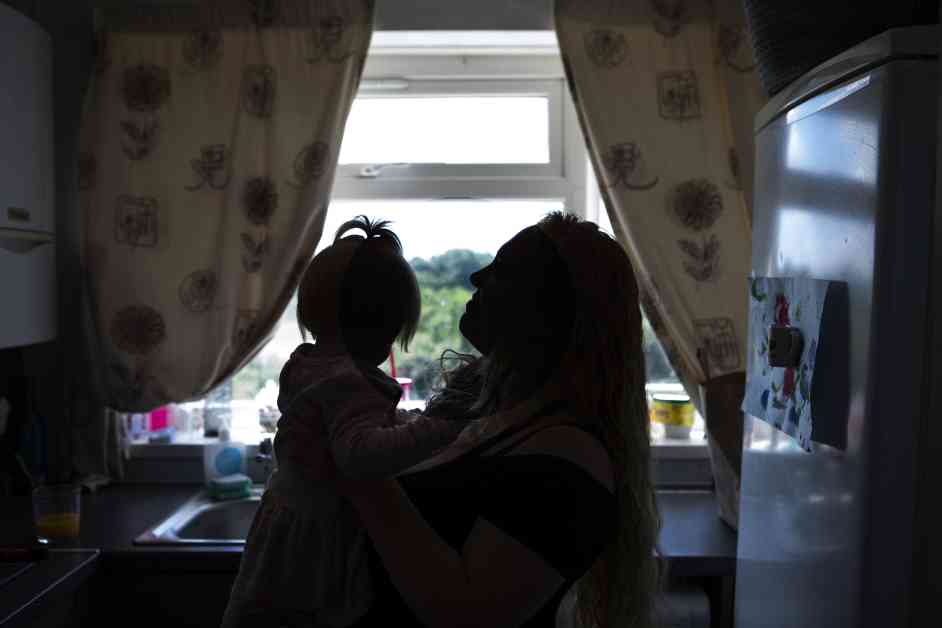John Swinney’s ‘new plan’ on child poverty has been a legal requirement of ministers since 2017, leading to criticism of ‘inaction’ from leading charities.
The Child Poverty (Scotland) Act was passed in 2017, which agreed on ambitious targets to cut child poverty by 2030 and placed a statutory duty on the Scottish Government to publish action plans in 2018, 2022, and 2026. The upcoming delivery plan is already in progress.
During the Programme for Government, the First Minister emphasized his commitment to eradicate child poverty. He stated, “In the coming year, we will consult on, develop, and publish a tackling child poverty delivery plan for 2026-31 – outlining the actions we will take with our partners for low-income families across Scotland to keep us on the journey to meet our poverty reduction targets for 2030.”
However, charities have criticized the plan, stating that it does not go far enough. The First Minister was told he missed the opportunity to increase the Scottish Child Payment to £40 per week.
John Dickie, director of the Child Poverty Action Group (CPAG) in Scotland, told The Herald that Mr. Swinney’s plan was not “new.” He added, “The 220,000 children still locked in poverty need urgent and substantive action now. We hoped to see a Programme for Government that grasped the scale of action needed.”
“The child poverty delivery plan the First Minister referred to is a statutory requirement of the 2017 Child Poverty (Scotland) Act that all Scotland parties backed. That plan must be far more ambitious and backed by the resources needed. There is only five years to go to get child poverty down to less than 10%. Current policies are working – but not at the scale and pace needed. The next plan needs to address that with urgency.”
The legislation commits to reducing relative child poverty to 10% by the end of the decade, with absolute poverty to be cut to under 5%. Concerns have been raised that the Scottish Government is not on track to meet these targets after missing ambitious targets of 18% and 14% this year.
Charities supporting The Herald’s campaign to increase the Scottish Child Payment have praised the policy as a “game-changer.” They have stressed that increasing the £27.15 weekly payment could lift an extra 20,000 children out of poverty, at a cost of £261 million.
The Herald, along with 23 charities, wrote to Prime Minister Sir Keir Starmer to abolish the two-child benefit cap, which the Scottish Government is “on track” to mitigate from next year.
Mary Glasgow, chief executive of Children First, described the Programme for Government as “well-intentioned” but lacking real action. She stated, “The First Minister missed another chance to help families by not increasing the Scottish Child Payment to £40. Scotland is facing a childhood emergency. The children and families we support cannot wait another 12 months for yet another fresh approach. They need action now.”
Jamie Livingstone, head of Oxfam Scotland, criticized Mr. Swinney’s announcement as “treading water while the storms of poverty and inequality rage.” He emphasized the importance of taking real action to address child poverty.
Fiona Steel, national director for Scotland at Action for Children, expressed deep frustration with the Programme for Government. She stated, “It’s a missed opportunity to provide money directly into the pockets of families which is desperately needed to help lift children out of poverty right now.”
Despite the criticisms, Mr. Swinney remains optimistic about the impact of Scottish Government policies on reducing child poverty. He highlighted the positive effects of policies such as the Scottish Child Payment and commitments to end the two-child limit.
While there are challenges ahead in meeting the targets set by the Child Poverty (Scotland) Act, charities continue to advocate for increased support for families in need. The debate on child poverty in Scotland is ongoing, with a focus on taking concrete actions to address the issue.
































